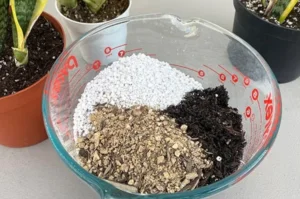Snake plants (also known as Sansevieria) have earned their status as the ultimate low-maintenance houseplant. They’re tough, beautiful, and incredibly forgiving. But does their easy going nature mean you never need to prune them? Let’s find out when a little trim might benefit your snake plant.
Best Season for Pruning
Like most plants, snake plants have active growing seasons and dormant periods. You’ll get the best results by pruning during spring or early summer. Your snake plant will be actively developing new leaves, so it’ll recover quickly from any cuts.
Health Check Before Pruning
Before grabbing your pruning shears, check your snake plant’s overall health. If the plant looks vibrant with firm leaves, it’s a good time to prune. If it seems weak, stressed, or is showing signs of disease, hold on until your plant is stronger.
After Winter Dormancy
If your snake plant slows its growth over winter, spring time is the perfect time to give it a quick refresh. Trim off any leaves that turned brown or got damaged over the colder months.
Pruning and Plant Stress
While snake plants are hardy, pruning does create a little stress. Avoid excessive trimming, especially if your plant is still young. A few strategic cuts are all it takes!
Pruning Frequency
Snake plants don’t need regular pruning sessions. A good rule of thumb is to give it a trim once every couple of years, or if you notice any of these signs:
- Overgrowth: It’s getting too big for its pot or space.
- Unevenness: Certain leaves are noticeably taller than others.
- If you see any damaged leaves on your snake plant caused by pests, accidents, or brown spots, it’s a sign that trimming is needed.
Light and Growth
If you want to slow down your snake plant’s growth, trimming is an option, but a simpler solution is adjusting the light. Snake plants tolerate low light well, and less light naturally means slower growth.
When Repotting
If you’re repotting your snake plant, it’s a good time to prune. Check the roots for damage – you can trim off any overly long or mushy sections for better regrowth in the new pot.
Before Propagation
If you’re hoping to propagate your snake plant (create new plants from cuttings), pruning is the way to go! You’ll trim healthy leaves into sections for propagation.
Understanding the Growth Cycle
Understanding the growth cycle of your snake plant is key to knowing when to prune. Typically, snake plants will produce new growth in the spring and summer months, slowing down during the fall and winter. Prune your plant during its active growing season to encourage quick growth and maintain its overall health and appearance.
As Needed for Maintenance
Regular maintenance pruning can be performed throughout the year as needed. Keep an eye on your snake plant’s foliage and remove any dead, diseased, or overcrowded leaves to promote air circulation and overall plant health.
Pruning Outside of Growing Season
Pruning in the dormant season shouldn’t harm your snake plant, but it might not have the energy for fast growth afterward. Stick to essential maintenance trims if you must prune off-season.






